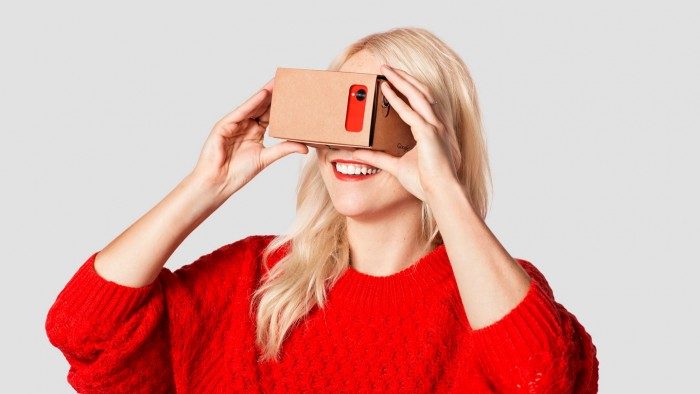Android VR Headsets Bring Straps and On-board Hardware
Take a look at the sea of VR viewers out there that have the official ‘Works with Cardboard’ designation (a little orange badge with QR code), and you’ll notice a curious oddity: unlike the Rift, Vive, Gear VR, and others, none of them have straps. This isn’t an accident, it’s a mandate.
Google won’t certify a VR viewer as ‘Works with Cardboard’ if it has a strap. A major reason for this move is that requiring the user to hold the device up their their head with their hands limits the rotational speed of their head significantly as it essentially requires you to rotate your entire torso as you turn. This was done to combat the latency inherent in current versions of Android, and to keep Cardboard VR experiences aimed at shorter sessions.
But now that Android N is likely to be tuned specifically for VR (ideally getting under that sub-20ms latency mark), the restriction can be lifted. And for that reason, we suspect that Android VR headsets will offer two things that Cardboard doesn’t: straps and the possibility of on-board hardware.
Why on-board hardware? Modern phones don’t have sensors on board that are fast or accurate enough for great VR. Another one of Gear VR’s tricks is that it has a high performance IMU built into the headset which takes over from the phone’s own IMU, speaking to the phone through micro USB. Even if you cut through Android’s latency on the software side, millions of existing phones out there will be lacking sensors that are ready for VR. Sensors on board Android VR headsets could fix this in the interim, while smartphones of the future will likely have the necessary sensors built in.
Other hardware that could be quite useful on-board Android VR is Google’s Tango sensors for positional tracking and other computer vision applications, as well as an input mechanism like the touchpad on the side of Gear VR.
Cardboard Lives On (for Now)
There’s already more than 5 million Cardboard viewers out there as of January 2016. By all accounts, most people who try Cardboard quite like it, despite it being notably inferior to more expensive platforms. And rather than phasing Cardboard out, Goolge only seems to be pushing it further. Ever since launching the initiative, the company had open-sourced the design and allowed third parties to make all manner of Cardboard variants. Only recently has the company finally begun officialy selling their own first-party version of the folded cardboard device (though they have certainly handed out many for free up to this point).
Cardboard will likely continue to exist as a super low-cost VR option for older devices that won’t ever see an upgrade to Android N. With the latest version of Android (6.0, Marshmallow) only deployed on 7.5% of devices (despite being released 8 months ago) and a majority of devices running Android 5.0/5.1 (initially released 18 months ago), there’s going to be a huge portion of Android smartphones that will likely only ever be Cardboard-capable, and this will likely continue to be a segment that Android VR developers want to target.
Importantly, Google is likely to continue its Cardboard infiltration of the iOS App Store, threatening to achieve some user lock-in before Apple even announces any official VR offering.
With I/O 2016 starting tomorrow, it won’t be long before we see how close our predictions align with reality. We’re on the ground at I/O 2016 this week and will be bringing you the latest on Google’s virtual reality initiatives.












